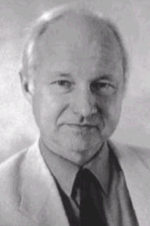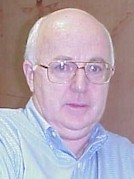I wrote the following profiles of New Testament scholars for my now-defunct website, “The Jesus Archive.” I republish them here for the benefit of readers who take an interest in the scholarly underpinnings of my novel, “The Mystery of the Empty Tomb.” — JAB
The “Temple Tantrum”
Paula Fredriksen reappraises the story of Jesus and the moneychangers in her reconstruction of his last days in Jerusalem.

by James A. Bacon
For much of her career as a historian of early Christianity, Paula Fredriksen accepted the story about Jesus’ chastisement of the moneychangers in the Temple as an historic event. By overturning the tables in the outer court, she believed, Jesus symbolically enacted the destruction of Herod’s Temple and its imminent replacement by God’s Temple at the End of Time. As she saw it, the action alarmed the Temple priests and triggered the events leading to his arrest and crucifixion.
Not everyone has interpreted the incident the same way. Continue reading.
Q&A: A Chat with Paula Fredricksen
The Jesus Archive caught up with Boston University scholar Paula Fredriksen one recent Sunday afternoon. We managed to ask a few questions about her new book, Jesus of Nazareth, King of the Jews, before she and her brood rushed off to the opera.*
JA: In any work, a scholar builds on the work of others but seeks to contribute something of his or her own to the store of knowledge. Where, in your opinion, does Jesus of Nazareth, King of the Jews make the greatest contribution to the quest for the historical Jesus?
PF: I’ve stood on the shoulders of giants: Ed Sanders, Geza Vermes, Krister Stendahl. Continue reading.
The Meier Primer
The historical Jesus according to the dean of Catholic scholars.

by James A. Bacon
In 1988 John P. Meier sat down with a representative of the Doubleday publishing company to discuss writing a book about the historical Jesus. As the conversation unfolded, both assumed the project would be a single volume. “Little did we imagine it would be a tetralogy,” Meier recently told an audience at Virginia Commonwealth University, whimsically comparing the resulting product to Wagner’s four operas, the Ring of the Nibelungen.
Fourteen years later, Meier can visualize the end of his epic project. Continue reading.
Will the Real Pontius Pilate Stand Up?
Was the man who crucified Jesus a tyrant, an anti-Semite or just a guy trying to do his job? Helen Bond portrays him more sympathetically than most.

by James A. Bacon
Pontius Pilate has gotten uncommonly bad press over the past half century. Some interpreters of the historic record have described the Roman governor as a murderous anti-Semite bent upon crushing the Jews. Others have dubbed him the agent of Roman imperialism: brutal, callous and determined to uphold an oppressive social and political order. The scholars who regard him as a tough but competent administrator, doing his best to govern a willful and independent people, remain a distinct minority.
Given the intense interest in the Historical Jesus and Pilate’s role in the trial of Jesus, Helen K. Bond’s treatise on Pilate, published in 1998, seems long overdue. Continue reading.
Q&A: Helen Bond on Pontius Pilate
The Jesus Archive caught up with Helen K. Bond during the lazy days of August. She’d just returned from a vacation to Poland, where she’d combined a romp through the Polish countryside with a haunting visit to Auschwitz. An English transplant to Scotland, she teaches New Testament studies at the University of Edinburgh. We queried her about her recent work on Pontius Pilate and current research into the High Priest of the Jews, Joseph Caiaphas.
Jesus Archive: Ann Wroe wrote a novel about Pilate around the same time you wrote your treatise. Published by Random House, the book has received loads of publicity and sold fairly well. What’s your reaction to Wroe’s portrayal of Pilate? Continue reading.
The Context Group
Bringing Social Science to New Testament Studies
by James A. Bacon
Bill Warren had a very simple point to make in his paper, “Literacy and Social Strata in the Roman Empire: Identifications and Locations.” The literacy rate for the Roman Empire as a whole may have been low, around five to 10 percent. But in the cities of the eastern Mediterranean where Christianity took root it was considerably higher, perhaps 15 to 25 percent. The issue was of more than abstract interest to Warren, director of the Center for New Testament Textual Studies at the New Orleans Baptist Theological Seminary, because literacy levels had implications for how written documents like the Gospels and Epistles were written, transmitted and received in the early church. Continue reading.
The Publican Conundrum
Why did Jesus consort with tax collectors? To broker relief for Galilee’s peasants, says Doug Oakman

by James A. Bacon
“And after these things he went forth, and saw a publican, named Levi, sitting at the receipt of custom: and he said unto him, Follow me. And he left all, rose up, and followed him. And Levi made him a great feast in his own house: and there was a great company of publicans and of others that sat down with them. But the scribes and Pharisees murmured against his disciples, saying, Why do ye eat and drink with publicans and sinners?” (Luke 5:27-30).
Jesus’ proclivity for feasting with tax collectors presents a challenge to New Testament scholars. Continue reading.
Rebellious Rabbi
Bruce Chilton’s Jesus, a powerful practitioner of throne mysticism, led a Galilean movement to reform the Temple cult.

by James A. Bacon
In Bruce Chilton’s appraisal, most books about the historical Jesus share a common fallacy: They fail to consider the Synoptic Gospels’ literary device of compressing the events of Jesus’ ministry into a single year. “Even the best scholarship has hopelessly confused the abbreviated structure of the Gospels with the actual chronology of Jesus’ life,” he writes. Continue reading.
Q&A: Bruce Chilton Explains Rabbi Jesus
Jesus Archive: With a title of “Rabbi Jesus,” your book courts controversy before the reader can even open it. Why did you portray Jesus as a rabbi?
Bruce Chilton: Rabbi is the designation applied to Jesus in the New Testament texts more than any other, including “son of God” and “messiah.” If you want to know how Jesus was known in his own time, both by friends and by enemies, then you have to start with the title rabbi. The book explains that a rabbi was a teacher within Judaism, recognized by the community as someone who conveyed the Torah. In later Rabbinical tradition, the title became associated with literary expertise, formal training, and ordination. This was not the case in the time of Jesus. In calling Jesus a rabbi, I’m not saying he went to a yeshiva. In the same way, we can call Peter an apostle without implying he belonged to the College of Cardinals. Continue reading.
Was Jesus an Egalitarian?
Jack Elliott thinks not. The concept of social equality did not exist in ancient Judea.
by James A. Bacon

Jack Elliott takes pride in his career of liberal activism. In the 1960s, he protested against the Vietnam War and marched in Selma, Alabama. In the 1970s, he employed Christian theology to advance the quest for social justice. Since then, he has dedicated his career to making the Lutheran Church more inclusive. A self-avowed feminist, he has advocated the equal treatment of women within the church. But as a scholar of the New Testament era, there’s one place he draws the line: He won’t change the past. No one advances the cause of justice, Elliott says, by rewriting history and pretending that Jesus and his followers were social reformers with 21st-century sensibilities. Continue reading.
Penetrating the Shroud
Delving into the chemistry of the Shroud of Turin, Bryan Walsh hopes to reopen scientific inquiry into the world’s most famous religious artifact.
by James A. Bacon

Last month, Bryan Walsh spent the better part of his waking hours holed up a Benedictine monastery outside Richmond, Va. Working in a makeshift laboratory there, he placed swatches of linen fabric in a petri dish with various combinations of wood, silver and water dosed with chemical salts, and then heated his concoctions to a range of temperatures well above the boiling point. Taking careful records of mass and pH measurements, he examined the cellulose structure of the linen under the microscope for evidence of chemical interaction.
Walsh, 57, believes that the Shroud of Turin, which bears a faint image of a crucified man, is the authentic burial cloth of Jesus. Continue reading.
Q&A: Brian Walsh on the Shroud of Turin
Jesus Archive: Radiocarbon dating proved to the satisfaction of almost everyone in the scientific community that the Shroud of Turin originated in the Middle Ages. What grounds would reasonable people have to question the results of that test?
Bryan Walsh: Radiocarbon dating is only one of the tools used to date an artifact. If you look at radiocarbon tests in archaeological datings over the past 20 years, you’ll find that about one percent of them are discarded. Archaeologists use stratigraphy, paleography, and many other methods to establish age… Continue reading.